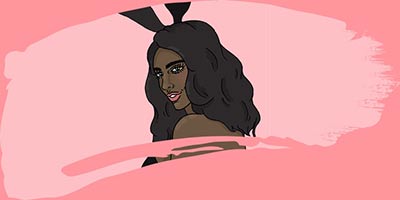babe •
My constant, incurable pain ranks 50 on the Pain Index Chart
Natural childbirth ranks 35
by
At age ten, childhood changed for Alysha. What was once a carefree life of school friends and playing outside morphed into a world of doctors, inconclusive tests, and fear. For nine years, Alysha has lived with a chronic paid condition known as RSD.
Alysha and I have been friends since middle school. She always puts the needs of others before herself, despite her own harrowing condition. Since the day of her diagnosis, I have seen her sunny personality shine through the adversity of living with chronic pain.
Here, she shares the story of her journey with RSD, both how it has changed her life and how she has conquered these challenges to be where she is today.
Alysha posing for her senior portraitFor those of us who don’t know, what is RSD?
RSD stands for reflex sympathetic dystrophy which is chronic neurological condition. It causes a variety of symptoms but the most common symptom is chronic pain that is out of out of proportion for what you’d expect for the injury that you have and swelling is also a symptom, sensitivity to touch, and overall pain that last for a long period of time.
Alysha (left) and her sister at Disney World before her diagnosisCan you give us a timeline of what happened to you that caused you to be diagnosed with RSD?
When I was 10 years old, I twisted my ankle on the stairs. Even though the injury wasn’t very severe, my pain kept getting worse. Things like physical therapy and bracing didn’t do much for the pain, so my parents brought me to countless doctors, hoping that someone would find out the cause. For almost a year, doctors had no idea what was wrong, until a pediatric orthopedic surgeon finally discovered a large cyst on of the main tendons in my ankle; I had surgery to remove the cyst soon after. I remember waking up from the surgery, and my doctor immediately reassuring me that it had been a success, and that he expected me to be nearly pain free within the next month or so.
Unfortunately, over the next couple weeks, the pain became unbearable, much worse than it had been before the surgery. I also started to notice swelling and color changes, and was still unable to bear weight on my ankle even two months after the surgery. At first, doctors really didn’t know what was going on. There is no single test for RSD, it’s instead diagnosed through symptom observation alone. The doctors were hesitant to make the diagnosis without ruling everything else out first. Several months after the operation, I was finally given the diagnosis of Reflex Sympathetic Dystrophy.
What did RSD feel like the first time you experienced it?
RSD felt, and still feels, like the worst pain imaginable. It ranks a 50 on the McGill Pain Index Chart, whereas natural childbirth ranks about 35. I’ve had broken bones before, but that pain was nothing compared to RSD pain. It is a burning, stabbing pain that affects me every minute of every day. Even though I’ve gotten somewhat used to the feeling now, the pain that I felt in the beginning was absolutely unbearable, and I was just really angry to have to be suffering at such a young age.
Is there a cure for RSD?
Unfortunately, there is no cure for RSD at this point, so treatment is mainly focused on pain management. I’ve tried many of the RSD management options available to me. Things like pain medication, physical therapy, acupuncture, and topical medications. The treatment options haven’t been the most successful for me and I still have a lot of pain, so I hope that the research being done by the RSDSA (Reflex Sympathetic Dystrophy Syndrome Association) will lead to a cure very soon.
What were your first thoughts when you were initially diagnosed with RSD?
When I was first diagnosed with RSD, my family and I had never heard of the condition and we certainly felt a little scared. We didn’t know how it would progress, and since the condition is so different for everyone who has it, even the doctor couldn’t give us much information on what to expect. On the other hand, I also felt a bit relieved to finally know why I had been hurting so badly, and to finally have a name for it. I guess I would have to say that I had mixed emotions about the diagnosis.
Alysha (right) and her sister. The brace on Alysha’s right leg, which helps her to walk with a regular gait, can be seen clearly.How was your life immediately affected by the diagnosis?
When I got diagnosed, I was using crutches and a wheelchair to get around. My life was already different than the way it had been before. I couldn’t do sports, I couldn’t walk, I couldn’t do a lot of the things that other kids my age were doing. After I was diagnosed, I was put into a treatment program for people with RSD so that helped me learn how to walk again.
Was there ever a time when you feared you would never walk again?
Yes. Since the pain was so severe, I did worry that it would stop me from ever learning to walk again. And, as time went by, and as I used my leg less and less, the muscles atrophied significantly, which made physical therapy much more difficult. Getting my first leg brace was a great moment for me because I could finally walk with a fairly normal gait, and that felt like a huge accomplishment.
Alysha (right) and her sister after participating in the Color RunNow you are 19. What is your life with RSD like now?
When I was first diagnosed, when I was scared and I didn’t know much about the condition, I wasn’t as positive as I was before the diagnosis and I was mad that I was the person that had to suffer from this. Now that it has been so many years, I’ve learned to live with it and I have a much more positive outlook on my diagnosis. I’ve realized that it’s not something that I can change, but there are many adaptations I can make in my life to allow me to do the things that I want to do.
What’s an example of an adaptation that you’ve made that’s made living with RSD a little easier?
I got a specially made leg brace. I got my first brace two years after I was diagnosed. It’s called an ankle-foot orthosis. It bends at the ankle, and it allows me to walk with a pretty normal gait and it has allowed me to not have to use a wheel chair anymore, which is really one of the most exciting things ever. That was one of the best days ever of my life, the day that I got my first brace and I could walk. It’s very exciting. That’s a wonderful medical advance. I also had a device installed in my car which moves the gas pedal over to the left side. I still use the regular brake. After learning how to drive with that, I can drive just like anyone else, just with a different leg.
Alysha getting ready for the prom, thanks to her new leg braceDespite all the adversity of living with RSD, your friends know you as so upbeat and bubbly and a happy person. What has helped to keep your positive throughout these eight years with RSD?
When I was first diagnosed, I couldn’t participate in gym class anymore but I was still in middle school and it was a required class. I would just sit in the gym class, by myself, doing nothing. The principal was very nice and she offered that instead of gym I could volunteer in the special needs classroom during my gym period. I was fortunate enough to work with the special needs kids from the time of my diagnosis up until my high school graduation. I think that working with the special needs is actually what kept me positive. We did activities like reading and crafts and we play games and cook together. They inspired me that in dealing with so many diagnosis and different medical conditions and all the disabilities that they have, they still maintained such a positive outlook on life and that’s what inspired me to do the same. I developed really close relationships with a lot of the kids in the class and I have gotten to grow up with them. During my sophomore year, I was given the honor of walking one of the students across the stage at her graduation. It was a huge accomplishment for her and it was so nice to be able to there for her and help her get across on her big day.
What would you want the public to know about RSD, and what can other people, who aren’t affected by the condition, do to raise awareness for those who are?
I want people to know that even if it doesn’t look like you’re sick, and you might not see it on the outside, a person could still be dealing with any kind of health problems, including RSD. A lot people with health problems are bed ridden or in a wheel chair, but there are other people who are walking around every single day with chronic pain. I think that if someone tells you that they’re dealing with chronic pain, it’s nice to be sensitive about it. You don’t have to feel bad for the person and I don’t want someone to feel sorry for me but I think there’s a certain amount of compassion that you have to have for someone who is dealing with it. And if you know someone who has RSD it would be really great if you could just talk about with someone. A lot of people, even doctors, have never even heard of it. I’ve been to doctors who’ve never heard of RSD, even though it’s not that rare of a condition it’s also not something that’s very common. I think that even just getting the word out about RSD is really important, even just knowing what it stands for.
Alysha (right) and her sister at freshman move-in at Assumption CollegeWhat are your future plans?
Right now I am going into my sophomore year at Assumption College. I’m studying biology. I hope to use my degree to join the medical field. After having experience with a chronic condition, I really became interested in medicine. My goal is to go into obstetrics and gynecology.
For people who may have been recently diagnosed with RSD, what advice do you have to give them to helping them through their own coping process?
It is important to find a doctor who knows about the condition, and they may be hard to find because they might not be near you. But it’s worth it to find someone who knows about RSD and who can help guide you through all of the options, and just know that there are always options. Even though it might seem like it’s going to be a really long road, you’ll get through it. Just have a positive attitude and you will get through it.
For further information about RSD, feel free to visit rsds.org











 2017 - 2024 Tab Media
2017 - 2024 Tab Media